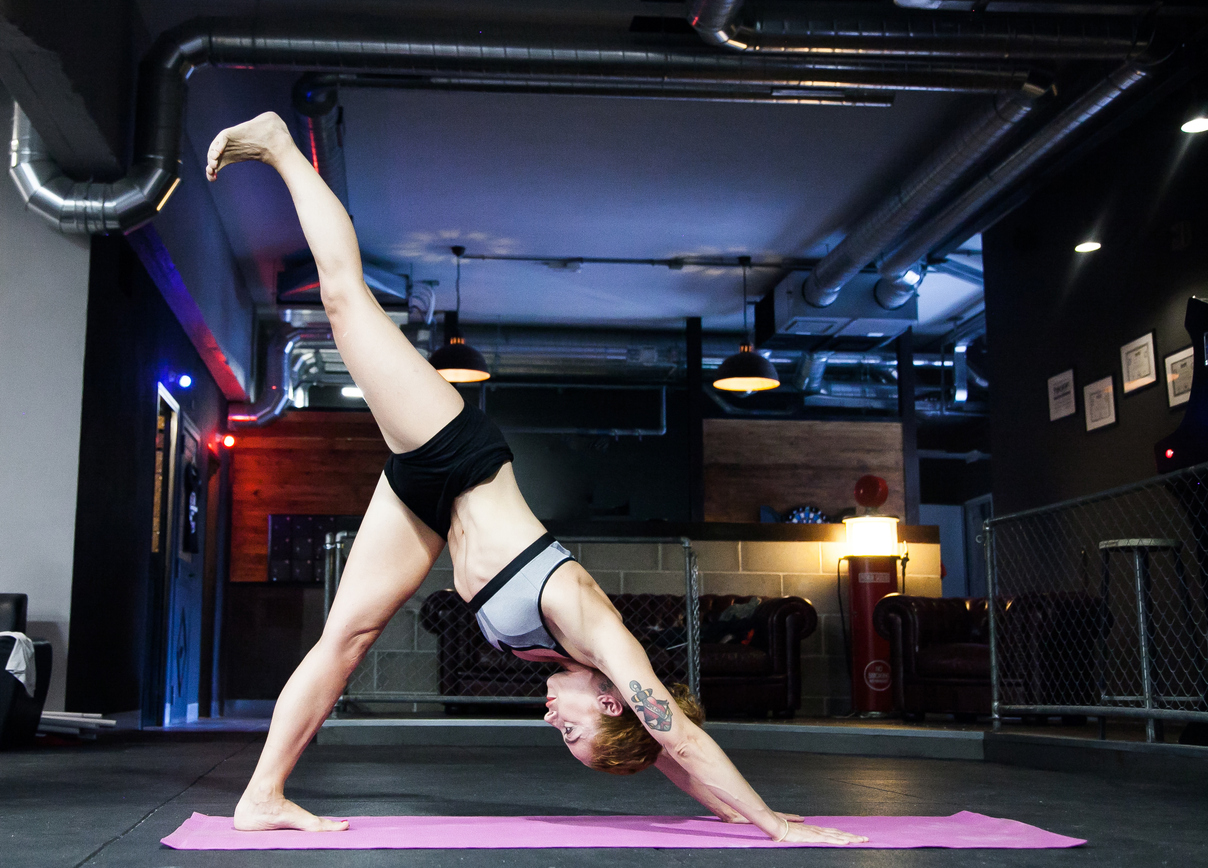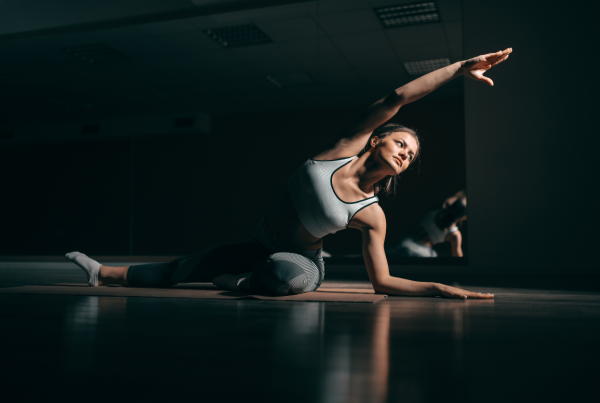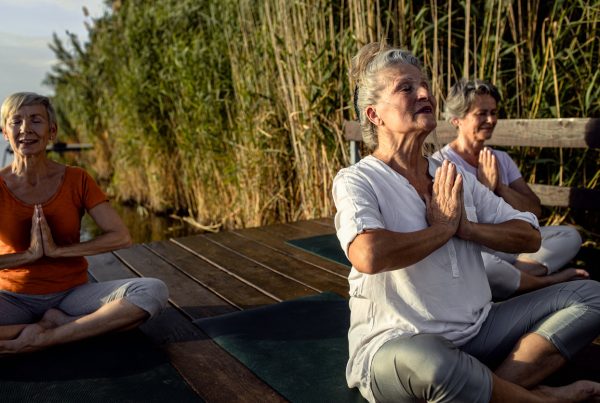Fiona Adamson, BWY teacher and Advanced Yoga Sports Coach, asks could sport-specific yoga be the missing link to achieve that extra edge in sport?
In the world of sports, every athlete understands the relentless demands on their physical and mental endurance. Hours of dedicated training with coaches are spent in search of that ‘edge’. But what if I told you there’s a secret weapon that’s fast gaining recognition among elite athletes?
While yoga may conjure images of flexible people in Lycra, this couldn’t be further from the truth. Yoga is an ancient science that delves into the depths of the body’s capabilities, harnessing its innate potential. Regardless of whether you can touch your toes or not, sport-specific yoga holds the key to enhancing your performance. Sport-specific yoga takes this age-old wisdom and melds it with cutting-edge developments in sports science. The result? An unparalleled training programme that grants you the extra edge needed to outshine your competition.
As an Advanced Yoga Sports Coach™ certified by the Yoga Sports Science Institute®, I am among a select few fully qualified, recognised and registered experts in the UK and across the globe. My mission is clear: to work alongside coaches, athletes, teams and support staff, offering transformative sport-specific yoga techniques that yield astonishing improvements in performance.
Through rigorous research and successful case studies across various sports, including martial arts, table tennis, football and archery, I have developed specific practices and methods of working to improve performance. One often overlooked aspect is the power of breathing. Having been an athlete myself, I understand how the focus is typically placed on various training facets, while the breath is often ignored.
In one study, our intervention unveiled the incredible benefits of specialised breathing techniques. Not only did athletes engage the correct breathing muscles, both primary and secondary, but they became indispensable tools. These techniques became vital for pre- and post-performance, during intense matches, and in moments of relaxation and focus. Stamina and breath recovery were noticeably enhanced.
But the benefits didn’t stop there. Athletes reported early gains in functional strength and conditioning, improved mobility and stability, heightened endurance, stamina, agility, proper alignment, proprioception, quicker reaction times and precise muscle recruitment through kinetic chains.
Regenerate
Performance breathing techniques offer a multitude of benefits that significantly enhance athletic prowess. These techniques boost your VO2 maximum capacity, making your breathing more efficient. They also facilitate the development of neural pathways in the brain that activate the serratus anterior muscles, resulting in increased lung expansion and capacity. By promoting diaphragmatic breathing deep into the lower lung lobes, these methods ensure optimal utilisation of both primary and secondary breathing muscles. Furthermore, they strengthen the heart and lungs.
In addition to these advantages, practising breath control leads to improved reaction time, enhanced balance, co-ordination, stamina and endurance. By increasing vasodilation and oxygen supply to the muscles, these techniques expedite the removal of lactate, pyruvate and waste products, reducing the risk of injury and post-strength session soreness. They can also be utilised as a relaxation, recovery and focusing tool away from training to engage with the parasympathetic nervous system.
The power of the breath
- Breath awareness – Encourages an initial connection to the breath.
- Three-part breath – Begin by inhaling deeply through the nose, allowing the breath to first fill the lower abdomen or belly. Feel the expansion of the abdomen as the lungs fill with air. Continue the inhalation, allowing the breath to expand into the mid-chest or ribcage. Feel the expansion and lift of the ribcage as the breath moves upward from the abdomen. Complete the inhalation by filling the upper chest or collarbone area. Feel the breath reach its full capacity as the chest gently rises. The entire inhalation process should create a smooth, upward flow of breath through these three areas. Reverse the process during exhalation, starting by releasing the breath from the upper chest, then the mid-chest, and finally the lower abdomen. Allow the breath to flow out effortlessly and completely through the nose.
- Three-part breath with hand placement – This offers a tangible breathing aid so that you can feel your breath enter the different areas where your hands are placed.
The benefits of sport-specific yoga when used consistently are:
- development and enhancement of focus, concentration and mental stamina, mindfulness and awareness
- enhanced physical performance, stamina, agility, fitness and endurance
- improved functional strength and conditioning
- development of structural postural and core stability and increased range of motion
- improved functional mobility and stability and static and dynamic balance
- improved intrinsic sequential firing of the muscles through kinetic chains
- aiding injury prevention and recovery from injury
- improved the quality and efficiency of the breath through performance breathing techniques
- effective management of tension and control of stress levels
- improved explosive power and explosive breathing
- improved proprioception, spatial awareness, body awareness and alignment
- greater motor control and an improved movement accuracy
- increased longevity within chosen field
- improved reaction times and biomechanical efficiency
- corrections to muscle imbalances and joint instability, perpetuated through repetitive and unbalanced sports
- reduced recovery times – restorative posture work benefits the cardiovascular and lymphatic systems and promotes active recovery.
A sport-specific yoga programme is designed with an understanding of the athlete’s biomechanics and the biomechanical demands of each specific sport and discipline, so each programme is uniquely and realistically designed to fit in with a possibly already intense schedule. After an initial introduction to sport-specific yoga techniques, an intervention will often last between five and 30/60 minutes, enabling the athlete to continue to attain training objectives.
Do you need insurance to cover your yoga classes? Add peace of mind by choosing FitPro’s insurance.
Author Bio:
 Fiona Adamson is an Advanced Yoga Sports Coach™, specialist yoga teacher and martial arts instructor. She has practised yoga for over 35 years and been a teacher for more than 18 years. She has studied extensively in various styles of yoga and martial arts across the world and has trained with some of the world’s leading martial arts and yoga providers, including the British Wheel of Yoga (BWY). Fiona is one of only a handful of Advanced Yoga Sports Coaches™ in the world to have completed Postgraduate Diplomas in Yoga Sports Science® with the Yoga Sports Science Institute and the biomechanics of yoga for sport. She works throughout the Midlands, the UK and the world working with sports people, athletes, coaches, teams, sports clubs and support staff across a wide and varied range of sports.
Fiona Adamson is an Advanced Yoga Sports Coach™, specialist yoga teacher and martial arts instructor. She has practised yoga for over 35 years and been a teacher for more than 18 years. She has studied extensively in various styles of yoga and martial arts across the world and has trained with some of the world’s leading martial arts and yoga providers, including the British Wheel of Yoga (BWY). Fiona is one of only a handful of Advanced Yoga Sports Coaches™ in the world to have completed Postgraduate Diplomas in Yoga Sports Science® with the Yoga Sports Science Institute and the biomechanics of yoga for sport. She works throughout the Midlands, the UK and the world working with sports people, athletes, coaches, teams, sports clubs and support staff across a wide and varied range of sports.







